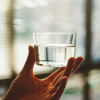In the sweltering summer heat, seeking shade is a common refuge. However, it's a little-known fact that one can suffer from heat stroke even in the shade. This condition, if not promptly addressed, can be life-threatening.
Why heat stroke can occur even in the shade
Heat stroke does not solely occur from direct exposure to sunlight. The main culprit is the body's failure to regulate its temperature, which can happen in any hot environment – shaded or not. High humidity levels, common during hot weather, can impede sweat evaporation, a key process in natural body cooling. This can occur even in places without direct sunlight, especially if the surrounding air temperature is very high.
Prevention and response
Awareness that heat stroke can happen even in the shade is the first step towards prevention. By understanding the conditions under which heat stroke develops and utilising available resources and homemade remedies, you can get through the warm weather more safely and help others do the same. Remember, during extreme heat, the best offence is a good defence – stay cool, stay hydrated, and stay informed.
Keep an eye on local weather forecasts to prepare for heatwave conditions. Early recognition of heat exhaustion (a precursor to heat stroke) can be lifesaving. Symptoms include heavy sweating, weakness, dizziness, nausea, and a fast, weak pulse.
If a heat stroke is suspected, seek emergency medical assistance. Move the person to a cooler environment, use cool clothes or a bath to lower their body temperature, and offer sips of the homemade electrolyte drink if they are conscious.
Homemade solutions
Wet a towel with cold water at home, wring it out, and place it in the freezer for a few minutes. Before heading out, gently press the towel on your neck, forehead, and wrists to help cool down your body's main heat exchange points.
You can also prepare homemade electrolyte drinks. Mix a half teaspoon of salt, six teaspoons of sugar, and one litre of water. Add a splash of orange juice for potassium and flavour. This homemade oral rehydration solution can help replenish vital salts and fluids lost through sweating.
In addition, spray bottle misters are a good solution. Fill a spray bottle with water and keep it in the refrigerator. Carry it with you and mist yourself periodically to help with the cooling through evaporation.








Comments